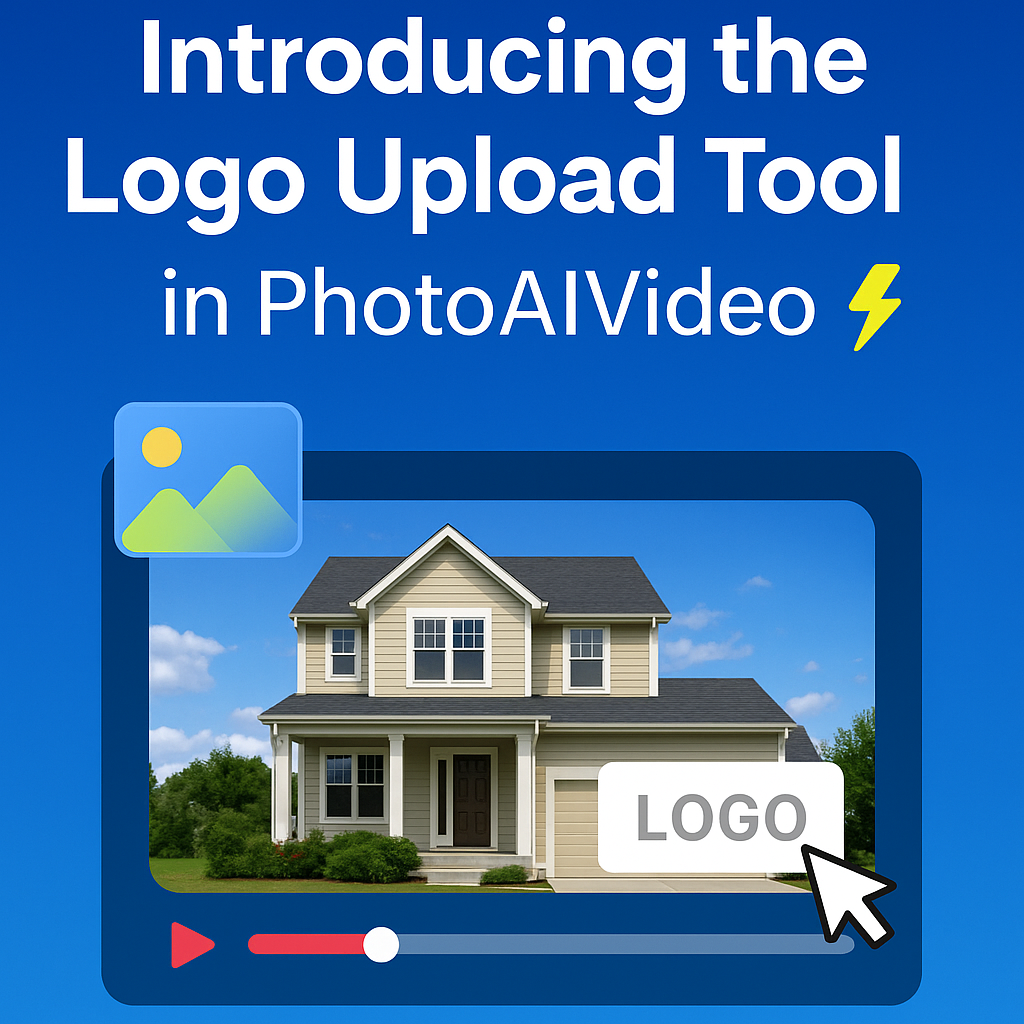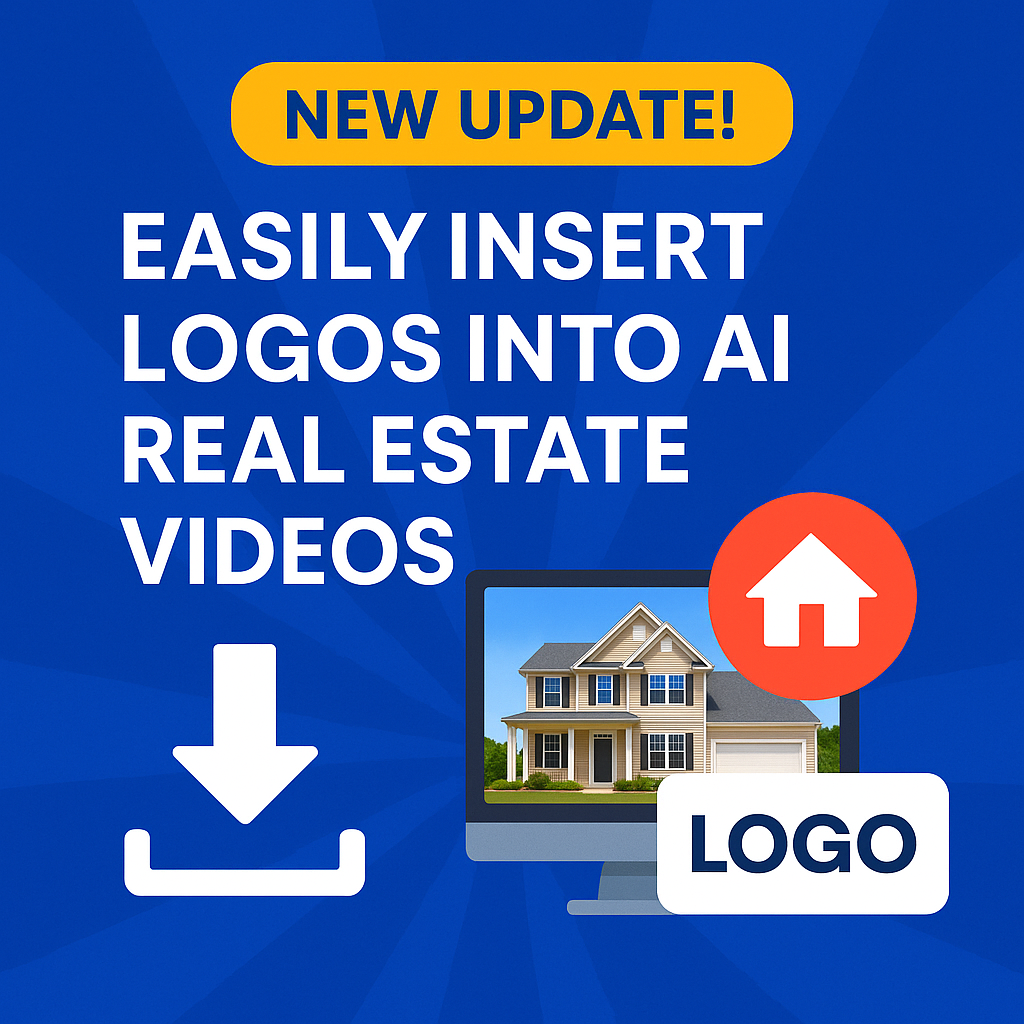In the fast-paced world of real estate, virtual tours for property managers have become a game-changer. They not only showcase properties in a unique way but also save time and resources for both agents and buyers. This guide will explore the many benefits of virtual tours, how to maximize engagement, and strategies for effective implementation. Whether you're a seasoned pro or just starting out, understanding virtual tours can help you connect with clients better and close deals faster.
Key Takeaways
- Virtual tours offer buyers the chance to explore properties from anywhere, making it super convenient.
- Using virtual tours can help property managers attract more interested buyers and increase listing visibility.
- These tours save time and money by allowing buyers to narrow down their options before scheduling in-person visits.
- Virtual tours tend to attract more serious buyers, which boosts the chances of closing a sale.
- As technology continues to evolve, incorporating virtual tours into marketing strategies is becoming essential for success.
Benefits of Virtual Tours for Property Managers
Time and Cost Efficiency
Virtual tours can really change the game for property managers. Instead of spending hours driving to different properties, you can give potential renters a look from anywhere. This saves a ton of time and gas money. Plus, you're only showing the property in person to people who are seriously interested, which cuts down on wasted trips. It's a win-win.
- Less time spent on travel
- Reduced fuel costs
- More efficient use of staff time
Improving Lead Quality
Think about it: someone who takes a virtual tour is already more engaged than someone just scrolling through photos. They're taking the time to really explore the property. This means the leads you get from virtual tours are usually higher quality – people who are genuinely interested and more likely to become tenants. It's like pre-qualifying your leads before you even talk to them.
- Attracts more serious renters
- Filters out casual browsers
- Increases the likelihood of conversion
Streamlining the Sales Process
Virtual tours can really speed things up. Renters can get a good feel for a place without needing to schedule a showing. This means fewer in-person tours, faster decisions, and quicker move-ins. Plus, it makes it easier to manage multiple properties at once. It's all about making the whole process smoother and more efficient. Using virtual tours can give agents a competitive edge.
Virtual tours are not just a cool new thing; they are changing how properties are shown and rented. They help bring in serious renters, save time and money, and make the whole rental process easier. By using virtual tours, property managers can improve their marketing and connect with renters better.
Maximizing Engagement Through Virtual Tours
Virtual tours are more than just a trendy tool; they're a way to seriously boost how people connect with properties. It's about making potential buyers feel like they're actually there, exploring every nook and cranny. Let's look at how to make these tours super engaging.
Interactive Elements to Captivate Buyers
To really grab attention, you need more than just a simple walkthrough. Think about adding elements that let people interact with the space. Here are a few ideas:
- 360-Degree Views: Obvious, but essential. Let people see everything.
- Clickable Hotspots: Add info points that pop up when clicked, giving details about appliances, materials, or even the neighborhood. This is a great way to highlight virtual tour software.
- Quizzes or Polls: Embed simple quizzes about the property or polls asking about preferred features. This keeps people engaged and provides data.
Increasing Time Spent on Listings
The longer someone spends on your listing, the more likely they are to be interested. Virtual tours naturally increase time on site, but you can amplify this effect:
- Embed the tour directly on your website and property portals. Don't just link to it.
- Use clear calls to action within the tour, guiding viewers to explore specific areas or contact you for more info.
- Add a progress bar or map to show viewers how much of the tour they've completed, encouraging them to see it all.
Enhancing Buyer Decision-Making
Virtual tours aren't just about showing off a property; they're about helping people make informed decisions. Here's how they can help:
- Allow buyers to measure spaces virtually. Include tools that let them estimate if their furniture will fit.
- Provide different viewing options, like a "daytime" and "nighttime" view to showcase lighting.
- Include neighborhood information within the tour, like nearby schools, parks, and amenities.
Virtual tours can be a game-changer, but only if they're done right. It's not enough to just slap a 360-degree image online. You need to think about how to make the experience interactive, informative, and engaging. That's how you turn casual browsers into serious buyers.
Technological Advancements in Virtual Tours
Virtual tours have changed a lot recently, making them way more useful for property managers. It's not just about showing a space; it's about giving potential renters and buyers a real feel for a property, no matter where they are. Let's look at some of the cool tech that's making this happen.
3D Walkthroughs and Interactive Features
3D walkthroughs are a game-changer. Instead of just clicking through photos, people can actually move through a property online. It's almost like being there. This helps them get a better sense of the layout and size of rooms. Plus, interactive features like being able to click on furniture to see product details or measure walls can really boost engagement. This is a big step up from traditional static images.
Virtual Staging and Its Impact
Empty rooms can be hard to imagine as a cozy home. That's where virtual staging comes in. It's where you digitally add furniture and decor to photos of a property. This helps potential buyers see how the space could look when it's furnished. It can make a huge difference in how appealing a property is, and it can even lead to faster rentals or sales. It's a smart way to show off a property's potential without the cost of actually furnishing it. AppKit offers comprehensive tools for creating virtual tours.
Mobile Compatibility and Accessibility
Everyone uses their phones for everything these days, so virtual tours have to work well on mobile devices. If a tour is clunky or slow on a phone, people will just click away. Making sure tours are mobile-friendly means more people can easily check out a property, no matter where they are. This also means thinking about accessibility features, like captions for videos or alt text for images, so everyone can enjoy the tour. It's all about expanding customer reach.
Virtual tours are becoming more common, and they're not just a fancy extra anymore. They're a key part of how people find and choose properties. Property managers who use these technologies effectively are going to have a big advantage in today's market. It's about making the viewing experience better and more convenient for everyone involved. They help buyers make informed choices.
Strategies for Implementing Virtual Tours Effectively
To really get the most out of virtual tours, you can't just throw them up and hope for the best. You need a plan. Here's how to make virtual tours a powerful part of your property management strategy.
Choosing the Right Technology
Picking the right tech is super important. You want something that's easy to use, produces great results, and fits your budget. It's like choosing the right tool for a job – you wouldn't use a hammer to screw in a screw, right?
- First, think about image quality. A blurry tour won't impress anyone.
- Second, consider the user experience. Is the software easy for both you and your clients to use? If it's clunky, people will click away.
- Third, explore different options. Do you want simple 360° views, or something more interactive? There are many virtual tour software options out there, so do your research.
Integrating with Existing Marketing Channels
Virtual tours shouldn't live in isolation. They need to be part of your overall marketing strategy. Think of them as another tool in your toolbox, working alongside your website, social media, and email campaigns.
- Share your virtual tours on social media. A quick video showcasing the highlights can grab attention.
- Include virtual tours in your email newsletters. Keep potential buyers informed and engaged.
- Add QR codes to your printed materials that link directly to the tours. This bridges the gap between traditional and digital marketing.
Integrating virtual tours into your existing marketing efforts can significantly amplify your reach and engagement. It's about creating a cohesive and comprehensive marketing strategy where each element supports the others.
Training Staff for Optimal Use
Your team needs to know how to use the virtual tour technology effectively. It's not enough to just buy the software; you need to train your staff so they can confidently present the tours to potential clients.
- Hold training sessions to teach your team how to use the software and answer common questions.
- Encourage feedback from your staff. They're on the front lines, so their insights are invaluable.
- Stay updated on the latest trends and tools in virtual tour technology. The digital landscape is always changing, so continuous learning is key.
Overcoming Challenges and Misconceptions About Virtual Tours
Virtual tours are becoming more common, but some property managers still hesitate. Let's address some common concerns and clear up a few misunderstandings.
Addressing Quality Concerns
One big worry is that virtual tours just can't match the experience of being there in person. People wonder if a screen can really convey the feel of a space. Another concern revolves around the quality of the tours themselves. Will they look professional? Will they accurately represent the property? It's true that a poorly executed virtual tour can do more harm than good. It's important to remember that a virtual tour is a marketing tool, and like any tool, it needs to be used correctly to be effective. virtual tour software can help with this.
Handling Technical Issues
Technical difficulties are another source of anxiety. What happens if the tour freezes mid-presentation? What if a client can't figure out how to navigate? These are valid concerns, but they can be mitigated with preparation. Here's a simple plan:
- Always test your equipment and internet connection beforehand.
- Have a backup plan, like a pre-recorded video tour, in case of technical glitches.
- Offer clear instructions and technical support to clients who may need it.
It's also a good idea to keep your software and hardware up to date. Regular maintenance can prevent many common technical problems.
Understanding Client Preferences
Finally, some property managers worry that their clients simply prefer traditional methods. They might think that older clients, in particular, will be resistant to virtual tours. While it's true that some people will always prefer in-person viewings, it's important to remember that preferences are changing. More and more people are becoming comfortable with 360º virtual tours, especially when they're well-designed and easy to use.
Here's how to understand client preferences:
- Ask for feedback after every tour.
- Track engagement metrics, like how long people spend on each tour.
- Stay up-to-date on the latest trends in virtual tour technology.
Creating a Virtual Tour That Stands Out
Selecting Your Equipment
You don't need to break the bank to get started with virtual tours. While professional equipment definitely offers advantages, there are plenty of affordable options to consider. You can even start with a smartphone and a wide-angle lens attachment. However, if you're serious about creating high-quality tours, investing in a 360º virtual tour camera is a worthwhile consideration. These cameras are designed specifically for capturing the panoramic images needed for a truly immersive experience.
Capturing High-Quality Images
The quality of your images is paramount. No matter how fancy your software is, a blurry or poorly lit image will detract from the overall experience. Here are a few tips:
- Lighting is key: Natural light is your best friend. Shoot during the day when possible, and open curtains and blinds to maximize brightness. For indoor shots, consider using additional lighting to eliminate shadows.
- Use a tripod: A tripod ensures stability and prevents blurry images, especially in low-light conditions.
- Pay attention to composition: Frame your shots carefully, highlighting the most important features of the property. Avoid clutter and distractions.
Think of each shot as a mini-advertisement for the property. What do you want potential buyers to notice first? Make sure that's what's in focus and well-lit.
Editing and Publishing Your Tour
Once you've captured your images, it's time to edit and stitch them together to create the virtual tour. There are many software options available, ranging from free to subscription-based. Some platforms even offer features like virtual staging and interactive elements. Don't forget to add your virtual tours to Google Street View to increase visibility.
- Stitching: This is the process of combining your individual images into a seamless 360-degree view. Most software offers automatic stitching, but you may need to make manual adjustments to ensure a smooth transition.
- Color correction: Adjust the brightness, contrast, and color balance of your images to create a consistent look and feel.
- Adding interactive elements: Consider adding hotspots that allow viewers to click on specific features, such as appliances or furniture, to learn more. You can also add audio narration or background music to enhance the experience.
- Sharing and embedding: Once your tour is complete, you'll need to upload it to a hosting platform and generate an embed code that you can use to add it to your website or real estate listings. A real estate listing kit can help you present your property in the best light.
The Role of Virtual Tours in Modern Real Estate Marketing
Virtual tours have really changed the game in real estate. It's not just about having a website anymore; it's about giving potential buyers an immersive experience from the comfort of their couch. They're becoming a key part of how properties are marketed today. Virtual tours are now essential for agents looking to thrive in a competitive market.
Enhancing Property Visibility
Think about it: more eyes on your listings means more potential buyers. Virtual tours break down geographical barriers. Someone across the country can explore 360º tour creation as if they were right there. This wider reach translates to increased visibility and a higher chance of finding the right buyer, faster. It's like having an open house that never closes.
Attracting Serious Buyers
Let's be real, nobody wants to waste time on properties that don't fit their needs. Virtual tours act as a filter, attracting buyers who are genuinely interested. They can virtually walk through the space, assess the layout, and get a feel for the property before scheduling an in-person visit. This pre-qualification process saves time for both the agent and the buyer, leading to more productive showings.
Improving Marketing ROI
Traditional marketing methods can be expensive and difficult to track. Virtual tours, on the other hand, offer a measurable return on investment. You can track how many people view the tour, how long they spend on it, and which areas they focus on. This data provides valuable insights into buyer behavior, allowing you to refine your marketing strategies and allocate resources more effectively. Plus, a well-executed virtual tour can be a major selling point, differentiating you from the competition.
Virtual tours aren't just a fancy add-on; they're a strategic investment that can significantly improve your marketing ROI. By providing an engaging and informative experience, you can attract more serious buyers, streamline the sales process, and ultimately, close more deals.
Virtual tours are changing how real estate is marketed today. They let potential buyers explore properties from the comfort of their own homes, making it easier to find the right place. With these interactive experiences, agents can showcase homes in a way that photos alone can't. If you're ready to take your real estate marketing to the next level, visit our website to learn more about how virtual tours can help you!
Wrapping It Up
In conclusion, virtual tours are changing the game for property managers. They not only help showcase properties in a more engaging way but also save time and money. By using virtual tours, you can attract serious buyers and streamline the sales process. As the real estate market keeps evolving, embracing this technology is no longer optional—it's a smart move. So, if you haven't jumped on the virtual tour bandwagon yet, now's the time to do it. Your future clients will thank you!
Frequently Asked Questions
What are virtual tours?
Virtual tours are online experiences that let people explore a property as if they were really there. They often include 360-degree views and interactive features.
How do virtual tours save time for property managers?
Virtual tours help property managers by allowing them to show homes to many people at once online. This means they spend less time driving to showings and can focus on serious buyers.
What technology do I need to create a virtual tour?
You can start with a smartphone and a special lens for wide photos. For better quality, a good camera and editing software are helpful.
Can virtual tours help sell properties faster?
Yes! Virtual tours attract more serious buyers, which can lead to quicker sales because buyers can see the property in detail before visiting.
Are virtual tours accessible on mobile devices?
Absolutely! Many virtual tours are designed to work well on smartphones and tablets, making it easy for buyers to view properties anytime.
How can I make my virtual tour stand out?
To make your virtual tour unique, use high-quality images, add interactive features, and ensure it’s easy to navigate for viewers.














.png)



.png)





.png)

.png)





